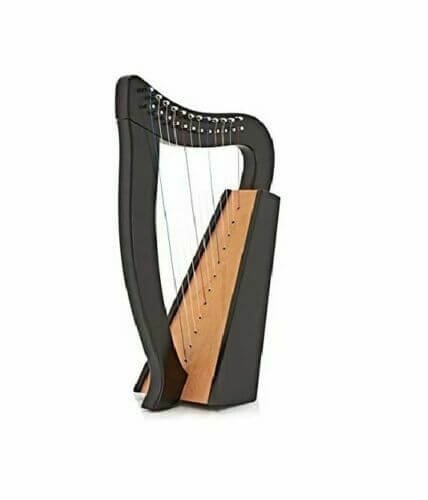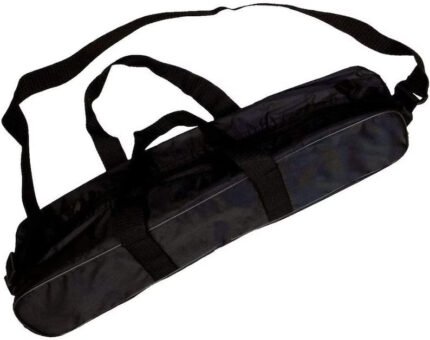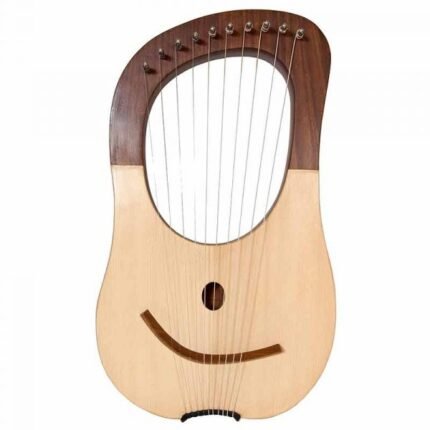Scottish musical instruments are a vibrant part of the nation’s rich cultural heritage, featuring iconic instruments like the bagpipes, fiddles, lyre harps, wooden flutes, practice chanters, and bombard chanters. Each instrument contributes to the unique sound of Scotland, blending traditional melodies with contemporary styles. Festivals, workshops, and educational programs play a crucial role in preserving this musical legacy, ensuring future generations continue to celebrate and share the beauty of Scottish music, much like the artistry found in Bonnie Kilts.
Shop Authentic Scottish Musical Instruments Online - Bonnie Kilts
Scottish musical instruments are a rich tapestry of sounds, traditions, and cultural heritage. These instruments have been integral to Scottish music for centuries, reflecting the diverse influences that have shaped the country’s musical landscape. This description will delve into various categories of Scottish musical instruments, exploring their history, construction, and role in traditional and contemporary music, all of which resonate with the spirit of Bonnie Kilts.
1. Introduction to Scottish Music
1.1 Historical Overview
Scottish music has a deep-rooted history, influenced by Celtic traditions and the various cultures that have interacted with Scotland throughout the ages. The music of Scotland can be traced back to ancient times when oral traditions and folklore were preserved through songs and melodies. The emergence of distinct regional styles has created a vibrant and varied musical landscape that showcases the rich history of the Scottish people.
From the Highlands to the Lowlands, each region boasts its unique styles and instruments, reflecting the local traditions and stories of the people. Instruments and music often served as a means of storytelling, preserving history and culture in a way that continues to resonate today, including in the designs and patterns featured in Bonnie Kilts.
1.2 Significance of Instruments
Musical instruments in Scotland are not merely tools for creating sound; they are cultural symbols that tell stories, evoke emotions, and celebrate community. Instruments like the bagpipes and fiddle play pivotal roles in folk music, ceremonial occasions, and social gatherings. In many cases, the choice of instrument is linked to regional identities and traditions, emphasizing the connection between music and place.
The significance of Scottish musical instruments extends beyond entertainment; they are deeply intertwined with the cultural and social fabric of Scottish life. Festivals, ceremonies, and family gatherings often feature traditional music, fostering a sense of community and shared identity among participants. This sense of community and celebration is also embodied in the patterns and heritage reflected in Bonnie Kilts.
2. Traditional Scottish Instruments
2.1 Bagpipes
2.1.1 History and Origins
The bagpipe is perhaps the most iconic Scottish instrument, with roots tracing back to ancient civilizations. Archaeological findings suggest that forms of the bagpipe were played as far back as 4000 B.C. in ancient Mesopotamia, but it was in Scotland that the Great Highland Bagpipe developed its unique characteristics. Its distinct sound has become synonymous with Scottish culture, often associated with the Highland clans and their battles.
The Great Highland Bagpipe, in particular, is celebrated for its powerful and expressive tone, which can carry across vast distances, making it ideal for outdoor gatherings and military ceremonies. The music played on bagpipes can evoke feelings of nostalgia and pride, much like the sentiments carried in the heritage of Bonnie Kilts.
2.1.2 Construction
A bagpipe consists of several parts:
- Bag: Traditionally made from animal skin (such as sheep or goat), it stores air and provides the instrument's unique resonance. Modern bagpipes often use synthetic materials for durability and ease of maintenance.
- Chanter: The melody pipe where the musician blows into the instrument. It features finger holes that allow for the playing of different notes. The chanter's design contributes significantly to the bagpipe's characteristic sound.
- Drone pipes: These produce a continuous sound that complements the melody played on the chanter. A standard Great Highland Bagpipe typically has three drone pipes, contributing to its rich harmonic texture.
2.1.3 Cultural Role
Bagpipes are central to Scottish ceremonies, including weddings, funerals, and national celebrations. Their music often accompanies Highland games and other cultural festivals, serving as a unifying force in Scottish identity. Pipers are often called upon to perform at significant events, where their music evokes strong feelings of nostalgia and pride in Scottish heritage.
The bagpipe's powerful sound also makes it a staple in military settings, where pipers play during parades and ceremonies to honor fallen comrades, celebrating both their lives and the culture they represented.
2.2 Fiddle
2.2.1 Evolution of the Fiddle
The Scottish fiddle, also known as the violin, has a long history in Scotland, evolving from medieval instruments. Its journey through history reflects the changes in musical styles and tastes. The fiddle became widely popular in the 18th century, particularly in the Highlands, where it became a key instrument for traditional music.
Scottish fiddle music is characterized by lively dance tunes and poignant ballads, often conveying the joys and sorrows of daily life. Over time, the fiddle has also embraced influences from other musical traditions, incorporating elements from Irish and European folk music, much like the diverse styles found in Bonnie Kilts.
2.2.2 Playing Techniques
Scottish fiddlers employ various techniques, including:
- Bowing styles: Different bowing techniques create distinct rhythms and moods. For example, the use of heavy bowing can produce a driving rhythm suitable for dance tunes, while lighter bowing may lend itself to more lyrical melodies.
- Ornamentation: Adding trills, slides, and grace notes enriches the melody. Ornamentation is particularly important in Scottish fiddling, allowing players to express their individual styles and interpretations.
2.2.3 Regional Styles
Different regions of Scotland have their fiddle styles, such as the Shetland style known for its intricate fingerwork and the Highland style characterized by its lyrical melodies. The diversity of styles showcases the regional identities within Scotland, as well as the cultural exchanges that have shaped Scottish music over time.
Shetland fiddlers often emphasize a unique rhythm and tempo, while Highland fiddlers may focus on a smoother, more flowing sound. The interplay of these regional styles contributes to the richness of Scottish fiddle music, much like the diverse patterns and colors in Bonnie Kilts.
2.3 Clarsach (Harp)
2.3.1 Historical Significance
The clarsach, or Scottish harp, is one of the oldest instruments in Scottish history, dating back to the medieval period. It is often associated with Scottish nobility and has a profound connection to Celtic mythology. The instrument was traditionally played by court bards and musicians, preserving history and storytelling through song.
Throughout history, the clarsach has been a symbol of status and cultural heritage, frequently appearing in Scottish literature and art. Its presence in ancient texts highlights its importance in maintaining the oral tradition, similar to how Bonnie Kilts preserve the stories and heritage of Scotland.
2.3.2 Construction and Types
- Materials: Traditionally made from wood, modern clarsachs may use metal strings and various types of wood for enhanced sound quality. The choice of wood can greatly influence the tonal quality of the instrument.
- Types: Different sizes and styles exist, including the lever harp, which allows for greater versatility in playing. The clarsach can vary in size, from small, portable instruments to larger concert harps.
2.3.3 Musical Styles
Clarsach music often features melodies that evoke the beauty of the Scottish landscape. It is commonly used in both solo performances and as accompaniment for singing. The harp’s gentle tones create a soothing atmosphere, often used in folk music and traditional gatherings.
In contemporary music, the clarsach has experienced a resurgence, with modern composers and musicians incorporating it into diverse genres, including pop and classical music, much like the innovative spirit of Bonnie Kilts.
2.4 Whistle
2.4.1 Origins and Development
The Scottish whistle, particularly the low whistle, has its roots in the simple folk instruments of the past. These woodwind instruments are often made from wood or metal and have gained popularity in the 20th century, becoming a staple in traditional Scottish music.
The whistle's simple design and ease of play make it an excellent instrument for beginners, while its expressive sound allows skilled musicians to create complex melodies.
2.4.2 Playing Techniques
The whistle is played by blowing air through a mouthpiece and covering holes to produce different notes. Its simplicity makes it accessible to beginners while allowing for intricate melodies. Whistlers often incorporate techniques such as breath control and finger agility to create varied dynamics and tonal colors.
2.4.3 Role in Ensembles
Whistles are often used in folk bands and ceilidh (traditional Scottish social gathering) music, adding a light and airy sound that complements other instruments. The versatility of the whistle allows it to adapt to different musical contexts, whether in a solo performance or as part of a larger ensemble.
2.5 Accordion
2.5.1 History of the Accordion in Scotland
The accordion was introduced to Scotland in the 19th century and quickly became a beloved instrument in Scottish folk music. It’s particularly prominent in ceilidh dancing and traditional gatherings, where its lively melodies encourage participation and dancing.
The accordion’s ability to play both melody and harmony makes it a versatile addition to Scottish music, allowing for rich arrangements and energetic performances.
2.5.2 Types of Accordions
- Piano Accordion: Features a keyboard on one side and buttons on the other. This type of accordion is popular in both traditional and contemporary settings, allowing players to easily switch between melodies and harmonies.
- Button Accordion: Has buttons on both sides and is often used in traditional music. The button accordion’s unique layout provides a different playing experience, allowing for intricate melodies and chords.
2.5.3 Playing Styles
Accordion players utilize various techniques, including:
- Bellow control: Adjusting the pressure of the bellows to create dynamics. This technique is essential for achieving the accordion's distinctive sound.
- Chord playing: Providing harmonic support for melodies. Accordionists often accompany themselves while singing, making the instrument popular in folk and traditional music settings.
2.6 Lyre Harp
2.6.1 Historical Background
The lyre harp is an ancient stringed instrument that has its roots in early Scottish music. Its elegant shape resembles an elongated triangle and is typically constructed with a wooden frame and gut strings. The lyre harp has a long history in Scottish folklore and storytelling, serving as a backdrop for ballads and poems.
2.6.2 Construction and Design
- Materials: Traditionally made from wood, the lyre harp features gut strings that produce a warm and resonant tone. Modern versions may incorporate synthetic materials for enhanced durability.
- Shape: The instrument’s distinctive triangular shape contributes to its unique sound and aesthetic appeal.
2.6.3 Role in Scottish Music
The lyre harp produces soft, melodic tones, often used in solo performances or intimate gatherings. It is associated with storytelling and poetry, making it a cherished instrument in Scotland’s cultural narrative. The gentle sound of the lyre harp adds emotional depth to performances, evoking feelings of nostalgia and tranquility, similar to the essence captured in Bonnie Kilts.
In modern times, the lyre harp is enjoying a resurgence in popularity, with contemporary musicians incorporating it into various musical genres, blending traditional Scottish melodies with modern styles.
2.7 Wooden Flutes
2.7.1 Origins and Development
Wooden flutes have a long history in Scottish music, tracing back to the early medieval period. They are known for their warm, rich sound and are often made from woods such as maple or boxwood. The craftsmanship of wooden flutes contributes significantly to their tonal quality, making them favored by many traditional musicians.
2.7.2 Construction
- Design: Typically, wooden flutes have six finger holes, and their construction can vary to produce different pitches and tones. The bore size and shape can also affect the instrument's sound.
- Artistry: Many flutists choose handmade flutes, which can significantly enhance the instrument's tonal quality. The art of flute-making involves meticulous attention to detail, ensuring that each flute is unique.
2.7.3 Playing Styles
Wooden flutes are used in various styles of Scottish music, including traditional folk tunes and contemporary compositions. Players often employ breath control and finger techniques to achieve intricate melodies. The flute's versatility allows it to adapt to different musical contexts, from solo performances to ensemble settings.
In recent years, the wooden flute has gained popularity in folk music circles, with many musicians exploring its rich tonal palette and expressive capabilities, much like the intricate designs of Bonnie Kilts.
2.8 Practice Chanters
2.8.1 Purpose and Importance
Practice chanters are essential tools for bagpipe students, allowing them to learn and perfect their skills before transitioning to the full bagpipe. They are crucial for mastering finger techniques and melodies, providing a quieter alternative for practice without the full volume of a bagpipe.
2.8.2 Construction
- Design: A practice chanter resembles a simplified version of the bagpipe's chanter, typically made of wood or plastic. The construction is designed to mimic the feel of the full instrument while being more portable.
- Sound: The practice chanter produces a quieter sound, making it suitable for practice in various settings. Its design allows for a similar finger layout to that of a full bagpipe, aiding in the transition for students.
2.8.3 Educational Role
Many pipers use practice chanters during their learning process, focusing on developing finger dexterity, intonation, and rhythm before taking on the full complexity of the bagpipe. Music instructors often emphasize the importance of practice chanters in building foundational skills for aspiring pipers.
Community groups and music schools frequently organize practice chanter sessions, providing a supportive environment for learners to hone their skills and gain confidence before progressing to the full instrument.
2.9 Bombard Chanters
2.9.1 Historical Context
The bombard chanter is a lesser-known but intriguing instrument in the Scottish music scene. Originating from the French bombard, it has adapted into Scottish music, particularly in certain regional styles. Its distinctive sound adds a unique layer to traditional Scottish ensembles.
2.9.2 Construction
- Design: Bombard chanters are typically constructed from wood, featuring a mouthpiece and finger holes similar to other woodwind instruments. The construction can vary, affecting the instrument's tonal quality.
- Sound Characteristics: Known for its penetrating sound, the bombard chanter is often used in ensemble settings to provide a strong melodic line. Its bright and bold tone complements the richer sounds of bagpipes and fiddles.
2.9.3 Role in Traditional Music
The bombard chanter adds a unique texture to Scottish folk music, often used alongside bagpipes and fiddles in ensemble performances. Its distinctive sound can evoke the energy of traditional celebrations and gatherings. Bombard players often collaborate with other musicians, contributing to the vibrant and diverse sound of Scottish folk bands, similar to the dynamic patterns found in Bonnie Kilts.
3. Contemporary Scottish Instruments
3.1 Electric Instruments
3.1.1 Integration into Scottish Music
As Scottish music evolved, so did its instrumentation. Electric guitars and keyboards have found their way into modern Scottish bands, blending traditional sounds with contemporary styles. The fusion of electric instruments with traditional folk elements has led to the emergence of new genres and musical expressions.
3.1.2 Influences and Genres
Electric instruments have broadened the scope of Scottish music, influencing genres like rock, pop, and folk fusion. Bands such as Runrig and Capercaillie have successfully integrated these elements, creating a sound that appeals to both traditionalists and modern audiences.
The incorporation of electric instruments allows for more elaborate arrangements, expanding the possibilities for musical creativity. Modern Scottish musicians often draw on a wide range of influences, creating a dynamic and evolving musical landscape, much like the diverse designs featured in Bonnie Kilts.
3.2 Scottish Drumming
3.2.1 Historical Context
Drumming has been an integral part of Scottish music, with its roots in ancient battle ceremonies and celebrations. The rhythmic elements of drumming complement melodic instruments, creating a full-bodied sound that enhances the overall musical experience. Traditional drumming techniques have been passed down through generations, contributing to the rich tapestry of Scottish music.
3.2.2 Types of Drums
- Bass Drum: Provides the rhythmic foundation for marching bands. Its deep sound anchors the ensemble, allowing for a powerful musical presence.
- Snare Drum: Offers sharp, high-pitched sounds, often used in drum corps. The snare drum's crisp tone adds an exciting layer to marching and ceremonial music.
3.2.3 Techniques and Styles
Scottish drummers employ various techniques, including rolls and flams, to create intricate rhythms that enhance the overall sound of the ensemble. Drumming in Scottish music is characterized by a strong sense of community, with group performances fostering camaraderie and shared cultural pride.
In recent years, contemporary drummers have embraced fusion styles, incorporating elements from other musical traditions and genres, enriching the vibrant drumming scene in Scotland, much like the innovative designs of Bonnie Kilts.
4. The Role of Scottish Instruments in Festivals and Events
4.1 Traditional Festivals
4.1.1 Highland Games
The Highland Games celebrate Scottish culture, featuring competitions in strength, athletics, and traditional music. Instruments like bagpipes and fiddles are integral to the festivities, creating an atmosphere of celebration and camaraderie. The games are a testament to Scotland's rich history and community spirit, drawing participants and spectators from around the world.
Competitions often showcase the skill and talent of musicians, providing a platform for emerging artists to perform alongside seasoned professionals. The joyous sounds of traditional instruments resonate throughout the events, reinforcing the cultural significance of music in Scottish life, much like the vibrant patterns of Bonnie Kilts.
4.1.2 Ceilidh Dances
Ceilidh dances bring communities together through music and dance. Traditional instruments play a significant role, providing the lively melodies that invite people to dance. The ceilidh fosters social interaction, encouraging participants of all ages to join in the festivities.
The atmosphere of a ceilidh is electric, with musicians and dancers feeding off each other’s energy. The combination of traditional tunes and communal participation creates lasting memories and strengthens community bonds, much like the shared experiences represented in Bonnie Kilts.
4.2 Modern Music Festivals
4.2.1 Folk Festivals
Events like the Celtic Connections festival in Glasgow showcase both traditional and contemporary Scottish music. Musicians from various backgrounds come together, blending styles and introducing new audiences to Scottish instruments. These festivals celebrate the diversity of Scottish music, highlighting the fusion of traditional and modern elements.
Workshops and performances at folk festivals often encourage collaboration among artists, fostering a sense of community and shared creativity. Attendees have the opportunity to experience a wide range of musical styles, from traditional folk to contemporary interpretations, much like the rich variety of designs offered by Bonnie Kilts.
4.2.2 International Influence
Scottish musical instruments have gained recognition worldwide, influencing musicians across genres. Collaborations with international artists have helped elevate the profile of Scottish music on the global stage. The integration of Scottish instruments into various musical styles reflects the universal appeal of the music and its ability to connect people across cultures.
Scottish musicians continue to innovate, blending traditional sounds with contemporary influences, enriching the global music landscape. The increasing popularity of Scottish music has led to more opportunities for artists to perform internationally, sharing their cultural heritage with audiences worldwide, just as Bonnie Kilts shares Scotland’s rich textile traditions.
5. Learning and Preserving Scottish Musical Heritage
5.1 Education and Community Programs
5.1.1 Music Schools and Workshops
Various music schools and community programs offer classes and workshops focused on traditional Scottish instruments. These educational initiatives aim to preserve Scotland’s musical heritage by passing down skills and knowledge to the next generation.
Classes often cover a range of instruments, from bagpipes to fiddles, providing students with opportunities to learn about their cultural significance while developing practical skills. Many programs emphasize the importance of community involvement, encouraging participants to engage with local traditions and celebrations.
5.1.2 Online Resources
The rise of digital technology has made learning about Scottish music more accessible than ever. Online tutorials, video lessons, and virtual workshops allow individuals to explore traditional instruments from the comfort of their homes. This accessibility has expanded the reach of Scottish music, attracting enthusiasts worldwide.
These resources often feature tutorials by experienced musicians, allowing learners to develop their skills and knowledge at their own pace. The online community fosters connections among learners, promoting shared experiences and cultural exchange, much like the connections made through Bonnie Kilts.
5.2 Archival Efforts
5.2.1 Documenting Traditions
Efforts are underway to archive traditional Scottish music, recording performances and oral histories to preserve the unique sounds and stories associated with each instrument. Organizations dedicated to cultural preservation actively work to document and promote traditional music, ensuring that future generations can appreciate the rich tapestry of Scottish musical heritage.
These archival efforts involve collaboration with musicians, educators, and cultural institutions, creating a comprehensive resource for researchers and enthusiasts alike. The preservation of oral histories and performances ensures that the stories behind each instrument and its music are not lost to time.
5.2.2 The Role of Festivals and Competitions
Competitions like the Royal National Mòd promote and celebrate Gaelic music and culture, encouraging musicians to engage with their heritage and share their talents. These events highlight the importance of preserving traditional music while fostering a sense of pride and community among participants.
By recognizing and celebrating outstanding musicianship, these competitions help ensure that traditional Scottish music remains vibrant and relevant. They provide a platform for emerging artists to showcase their skills and inspire others to pursue their musical passions, much like the designs and stories behind Bonnie Kilts.
6. Conclusion
Scottish musical instruments represent a rich cultural heritage that continues to evolve while honoring its roots. From the powerful sound of the bagpipes to the delicate melodies of the clarsach and the lively tunes of the lyre harp, wooden flutes, practice chanters, and bombard chanters, each instrument contributes to the vibrant tapestry of Scottish music.
As traditions are passed down through generations, the significance of these instruments remains strong, ensuring that the sounds of Scotland will echo for years to come. The ongoing efforts to promote, teach, and celebrate these instruments are vital for preserving the unique identity and musical heritage of Scotland in a rapidly changing world.
In the future, Scottish musical instruments will likely continue to adapt and evolve, reflecting the dynamic nature of music and culture. The rich history and tradition surrounding these instruments will serve as a foundation for innovation and creativity, ensuring that Scottish music remains a vital and cherished part of the global musical landscape, much like the legacy of Bonnie Kilts.Scottish musical instruments are a vibrant part of the nation's rich cultural heritage, featuring iconic instruments like the bagpipes, fiddles, lyre harps, wooden flutes, practice chanters, and bombard chanters. Each instrument contributes to the unique sound of Scotland, blending traditional melodies with contemporary styles. Festivals, workshops, and educational programs play a crucial role in preserving this musical legacy, ensuring future generations continue to celebrate and share the beauty of Scottish music, much like the artistry found in Bonnie Kilts.
























